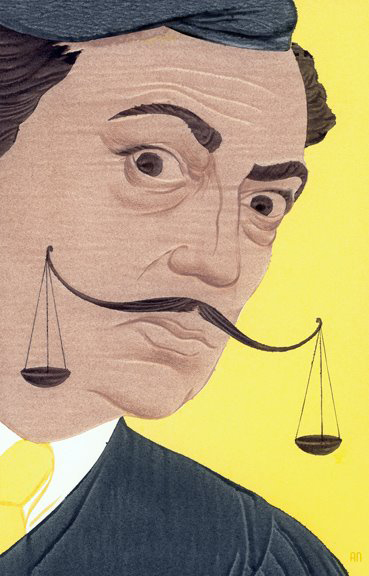 |
| By Alex Nabaum |
Art and the Law?
<== Copyright; Am I even allowed to use this picture??
This week's Professional Practice lecture was a bit special and was attended by the fine arts and design students on how consider the legal side of their practices, which was presented by Robyn Ayres from Arts Law.
Personally I found it kind of funny, because you could tell who were artists and who were designers based on their appearance and how they present themselves.
Anyway, back to the main point. Arts Law is an organisation based in Sydney who gives advice to artists based on legal and business issues.
Despite taking heaps of notes, a lot of things she talked about kind of flew over my head due to all the law lingo, but i'll try to write about it.
The first issue discussed with on Intellectual Property and copyright.
Copyright:
- Is automatic and doesn't need to be registered
- © symbol acts as a warning to other people
- When written "©Name of work, owner, date"
- Gives limited rights to creators over a limit of time - all their life and 70+ years after death (in Australia)
- Can't copyright thoughts, concepts or ideas, only the physical work or product
- Can be owned by one person or by multiple owners
- If employed, copyright goes to the company, not the individual
- If you sell work, the copyright is still retained by the artist, unless stated otherwise
- Copyright can be exchanged via a contract
- Can give others permission to use copyrighted material with a licence.
- Permission includes: copying, re-producing and using pieces of the work
Then we talked about Intellectual Property and it's relationship to the internet and that having a website incorporates many opportunities and risks. Websites can't be copyrighted as a whole, but is broken down in to pieces such as pictures, text, animations/ film, music and computer programming (which is also included as text).
Advantages of a personal website:
- Personal space on the web
- can have an online presence
- retain control
- can customize your space and features
- can show up on search results
Disadvantages of a personal website:
- Cost to run it
- need technical knowledge to build it
- Needs to maintain it and keep it up to date
Advantages of using social websites:
- Be able to connect to people via the social network
- Find people with similar interests and connect/ build communities
- easier to use compared to building your own website
- can share and promote your ideas and works
Disadvantages of using social websites:
- Loss of control
- Privacy issues
- Signing over certain rights when entering a contract (terms and conditions)
- Lack of customization
- losing yourself as an individual within a large community
Terms and Conditions offered by social networking websites:
- Terms and conditions is a contract
- Every website as a different set of terms and conditions
- They are in accordance with the law. Bigger companies often abide by US laws as opposed to Aus laws.
- What permission are you granting them?
- How will your work be used?
- Policy infringement and the consequences
- You're responsible for your own copyright
Tips:
- Online infringement is easy, so look out for it.
- Use the © symbol on your works
- Some features enable you to disable the right click so people can't save your images
- Stream V.S download when you have videos
- Upload low resolution images of your work
- Watermark your images
To be continued in part 2...

No comments:
Post a Comment